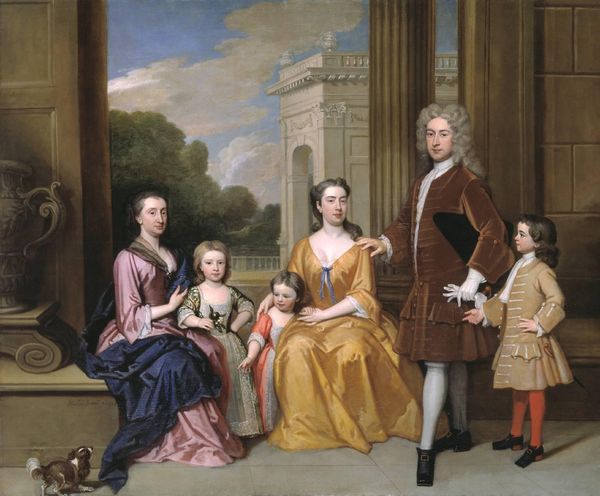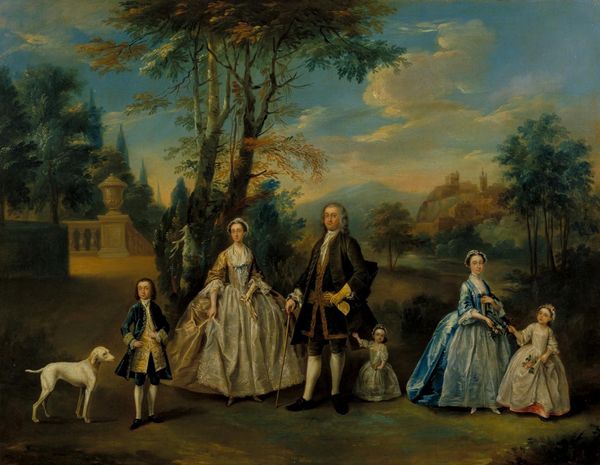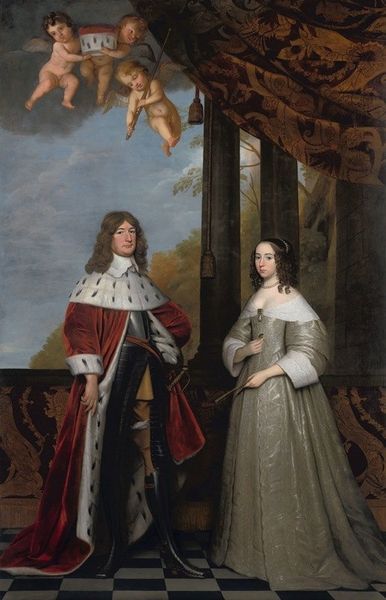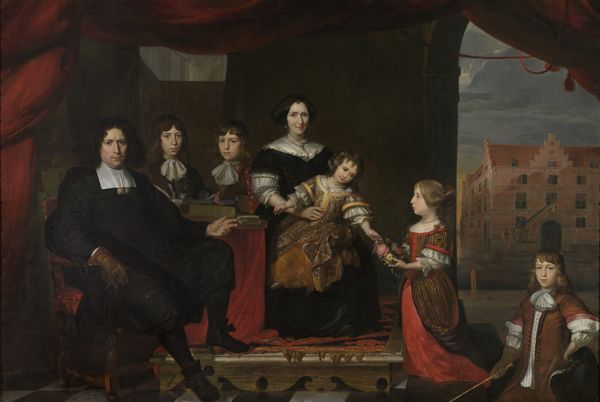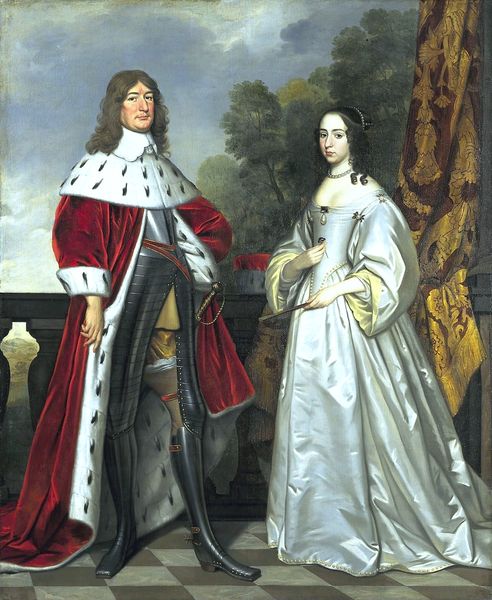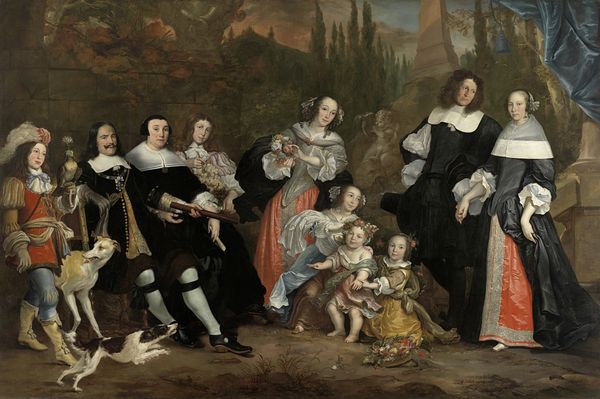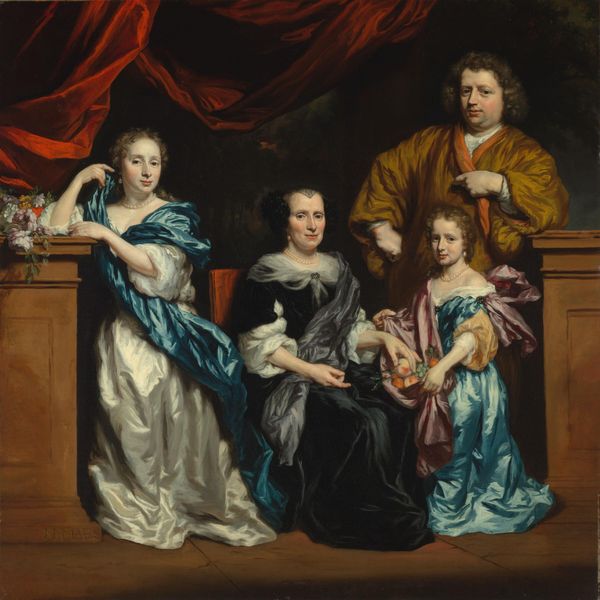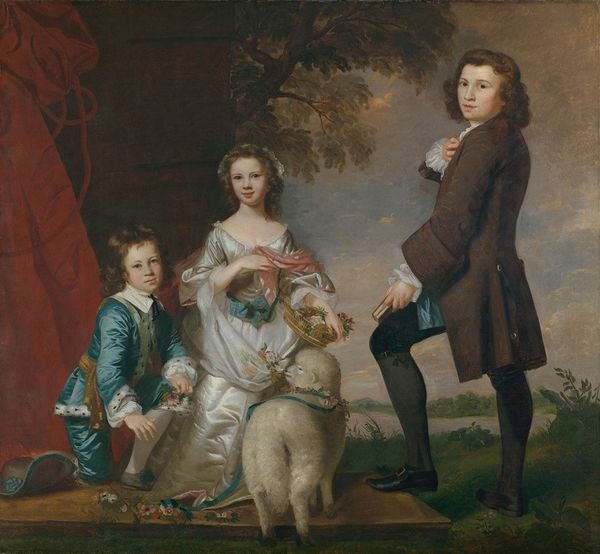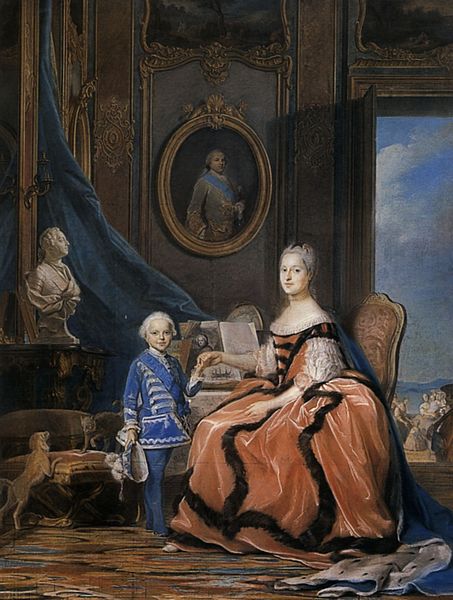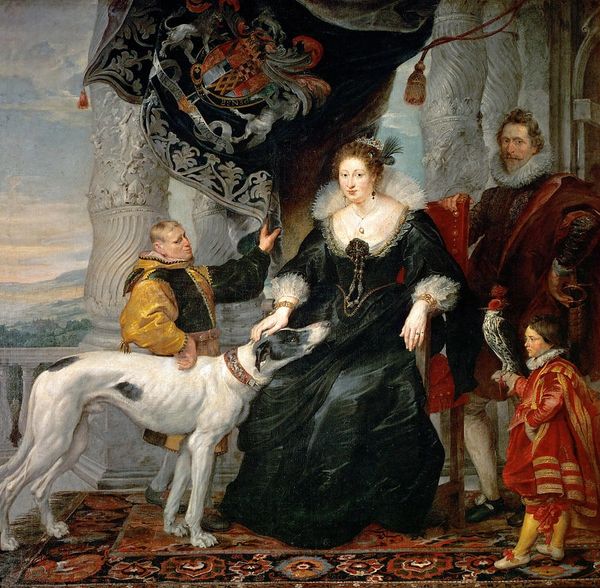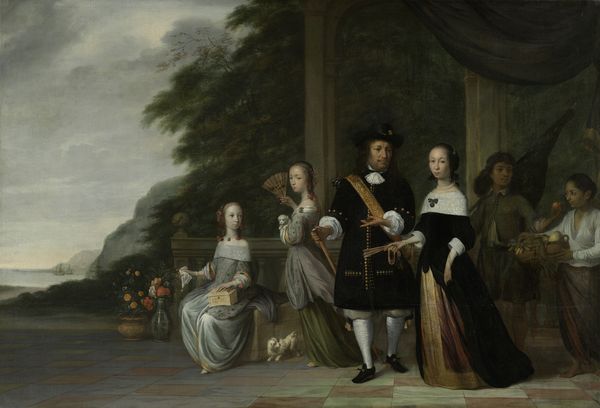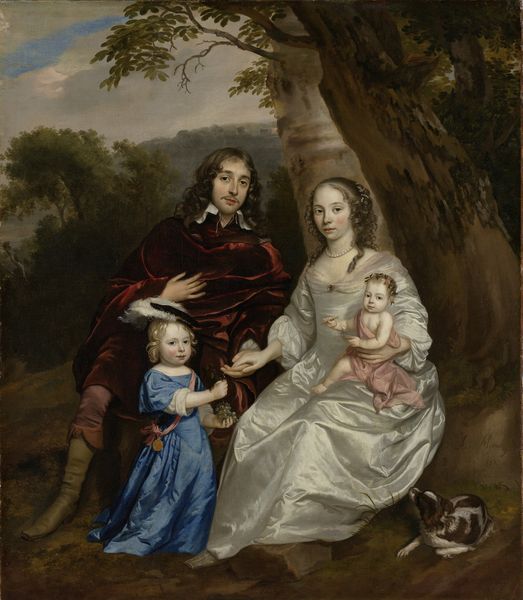
Frederick Henry, his Consort Amalia of Solms, and their Three Youngest Daughters c. 1647
0:00
0:00
painting, oil-paint
#
portrait
#
figurative
#
baroque
#
dutch-golden-age
#
painting
#
oil-paint
#
figuration
#
oil painting
#
group-portraits
#
history-painting
#
academic-art
#
realism
Copyright: Public Domain: Artvee
Gerard van Honthorst painted this portrait of Frederick Henry, his consort Amalia of Solms, and their three youngest daughters in the Dutch Golden Age, a time of prosperity and cultural flourishing in the Netherlands. During this period, the House of Orange-Nassau played a pivotal role in Dutch politics and society. Frederick Henry, as stadtholder, was a powerful figure, and this painting reflects his family's status and influence. Amalia of Solms, his wife, was a prominent figure in her own right, known for her intelligence and political acumen. Together, they cultivated a court that was a center of artistic and intellectual life. Note how the painting is not just a depiction of individual likenesses but an assertion of dynastic power and continuity. The composition, with its formal arrangement and symbolic details, reinforces the family's position at the apex of Dutch society. You can sense how the painting is not just a portrait but a carefully constructed image of power and authority.
Comments
rijksmuseum about 2 years ago
⋮
Amalia commissioned this painting for the palace of Huis ten Bosch. It hung next to portraits of her eldest, already married children, William II and his English bride, Mary, and Louise Henriette and Frederick William I of Brandenburg. Judicious marriages of state consolidated the position of the House of Orange among the other European royal families. Their three youngest daughters would marry German princes. Through them, Amalia’s love of Asian luxury was disseminated throughout Europe.
Join the conversation
Join millions of artists and users on Artera today and experience the ultimate creative platform.
